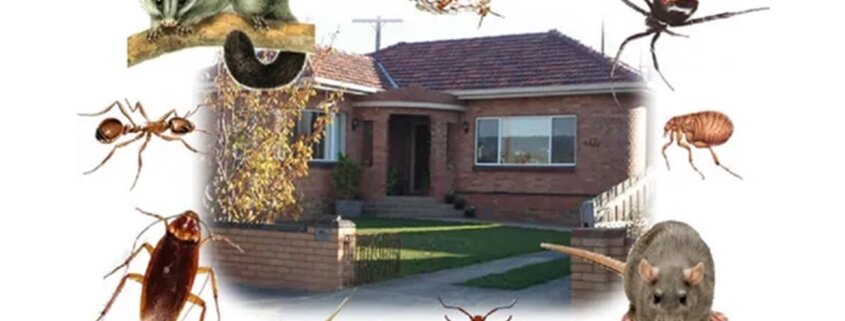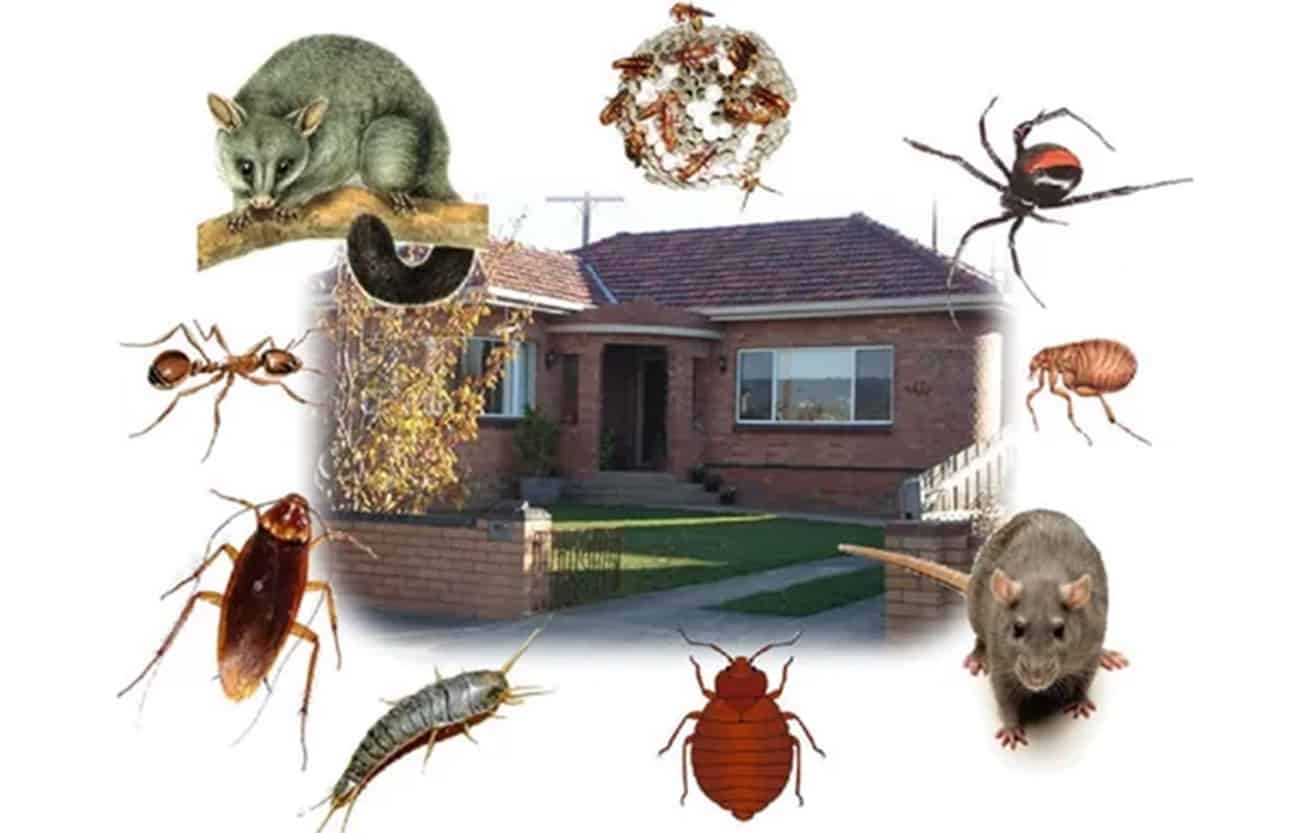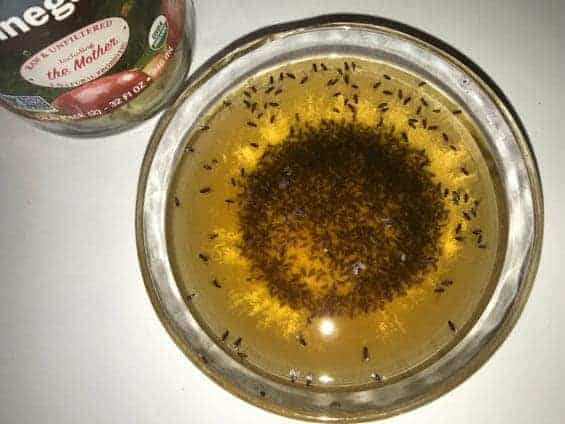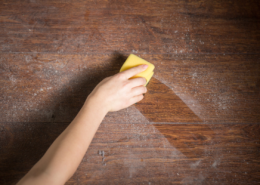19 DIY Non-Toxic Natural Pest Control Recipes and Solutions
Recently, a friend sent me an S.O.S. asking if I knew of any natural pest control to rid an apartment of fleas—a method that would not be toxic to small children.
Treating all pets and animals would be the first step, but surprisingly these folks have no animals. The truth is that flea infestations often occur simply because neighborhood cats or dogs like to lounge near their home or they have purchased an infested piece of furniture from a yard sale.
I headed right for my collection of pest control recipes and retrieved the perfect solution for fleas. I thought you might enjoy knowing that one for fleas, plus natural, non-toxic remedies for all kinds of home and garden pests.
Flea treatment for the home
Commercial flea exterminators charge anywhere from $300 – $1100 to treat your home with natural pest control—food grade diatomaceous earth. You can do this yourself with a flour-sifter and a 5-pound box of diatomaceous earth.
Sprinkle the food-grade diatomaceous earth onto your carpet with the sifter, then brush or pound it in with a broom. Leave for 24-36 hours, then vacuum up. This is a non-toxic and environmentally safe treatment but, wear a face protector even so because it is fine as powder.
The diatomaceous earth you get from a pool supply is NOT food-grade. It has been chemically altered and does not kill fleas. Check with a garden supply store or get my favorite, Harris Food Grade Diatomaceous Earth online.
Ants
Repel an ant invasion with this natural pest control: Wash countertops, cabinets, and floors with equal parts water and vinegar.
Or, if you have ants or other bugs around the house, pour a 50/50 mixture of Blue Dawn dish soap and water into an empty spray bottle and keep it handy. When you see the insects, spray them with the mixture. Provided you really saturate those little critters, the soap actually breaks down their exoskeletons, and they die almost immediately. Cheap and easy cleanup, too.
Aphids
Mix 1-gallon water, 1 tablespoon vegetable oil, and 2 tablespoons liquid dishwashing detergent. Spray on plants where aphid damage is evident.
Bugs, spiders, ants
To prevent ants, spiders, and bugs from entering your home or other structures, spray the foundation and the grout within a foot of the wall with a mixture of 1/2 cup ground up lemon including the rind (puree in a blender or food processor) plus one gallon of water. Apply with a garden sprinkling can with holes large enough to dispense the pulp. Not only is the weak solution versatile, but it’s also mild, cheap, and environmentally sound.
Cockroaches
Mix 1/4 cup shortening with 1/8 cup sugar. In a separate container mix 1/2 pound powdered boric acid (also available at pharmacies) and 1/2 cup flour. Add to shortening mixture. Stir well with enough water to make a soft dough. Form into small balls the size of marbles and hide in those out-of-way places roaches love to hide. This recipe works far better than commercial products. Just make sure you keep this out of the reach of children and pets.
Fly and insect spray
Rubbing alcohol makes a great fly and insect spray. Fine mist evaporates quickly and is not harmful to anyone but the pests. This doesn’t necessarily kill them but anesthetizes the little guys, so once they’re asleep, dispose of them quickly.
Fruit flies
Set out a small dish of apple cider vinegar (white vinegar will not work, it must be apple cider vinegar) to which you’ve added a drop of liquid dishwashing soap. Cover with plastic wrap then pull back the wrap along part of the edge to give an entry point. Fruit flies fly in and never come out. The detergent breaks the surface tension of the vinegar so they can’t just sit on top of it—they fall in.
All-purpose outdoor insect spray
Mix one chopped garlic clove, one chopped small onion, and one tablespoon cayenne powder with one-quart water. Allow to steep one hour, then add one tablespoon liquid dishwashing soap. This all-purpose insect spray remains potent for only one week, so use it up by spraying the exterior perimeter of the house.
Garbage cans
Sprinkle powdered detergent soap or borax into garbage cans after they’ve been washed and allowed to dry; it acts as a repellent to flies.
Mice
Use peanut butter as bait for your mousetraps. You can reset the traps and catch several mice before you need to add bait.
Or you may be able to toss the mousetraps for good when you follow one of my reader’s quite amazing solution:
“The easiest way to rid a home of mice is oil of peppermint. Put it on cotton balls where you have evidence of mice. You will never see them again. This has worked for me when I found their evidence in a grains-storage cabinet. Gone for good. That was about 10 years ago. A friend moved into a rental and the garage was infested with mice. I told her about the oil of peppermint and she rid the garage in two days. She said it was a miracle.” Thanks, Nina!
- MORE: Mouse in the House
Mosquito repellents
Plant basil around the patio and house to repel mosquitoes. Keep it well-watered so that it produces a stronger scent.
Moths
Make sachets of dried lavender or equal portions of rosemary and mint. Place in closets, drawers, or closed containers to mothproof garments.
Silverfish
To get rid of silverfish put about 1/4 inch of flour in a small, straight-sided glass. Run a strip of adhesive or masking tape from bottom to top on the outside to provide traction. Silverfish will travel up the tape and drop into the glass, but they won’t be able to get back out. Place one of these traps in each room where you’ve seen silverfish.
- MORE: Silverfish Relief
Snails and slugs
To keep snails and slugs out of your garden sink pie pans in the garden so the rims are flush with the ground. Fill with beer. The slugs and snails will be attracted to the beer which will be their final undoing and a lovely object lesson for kids who think it’s cool to drink beer. Simply empty the pie pans when they get full.
Snails
Snails will turn around and go the other way rather than cross a protective border of sand, lime, or ashes.
Spiders
To discourage spiders spray rubbing alcohol on windowsills.
Tacky fly swatter
For fruit flies and other tiny flying insects that a regular fly swatter just seems to miss, put a few strips of double-backed tape on your flyswatter.
Tape that sucker
Don’t squash a bug crawling on your wall, drapes or anywhere else it can stain. Just “apply” a strip; the bug adheres to it and can be disposed of.
Wasp repellent
Toilet-bowl deodorizers nailed by the door, placed near wastebaskets, or set on a windowsill will keep wasps away. They hate the smell. Disclaimer: This one isn’t completely natural, but it really does work.
Updated 6-10-21
Everyday Cheapskate participates in the Amazon Services LLC Associates Program, an affiliate advertising program designed to provide a means for us to earn fees by linking to Amazon affiliated sites.


















Do you have any suggestions about rats? I have had rats every few years or so, and it is getting frustrating!
Do you have any ideas for getting rid of Carpenter Bees? Our porch is infested with them. They scare people that come to my door.
I found a great how-to from Bob Vila, one of my DIY heroes from way back! Honestly, I’d never heard of carpenter bees. But if we had that problem here in Colorado, you can be sure my hubs would be out in his workshop building Bob’s carpenter bee trap! It sure looks like a great DIY solution—and makes a lot of sense. Let us know how that goes …
How to Make a Carpenter Bee Trap